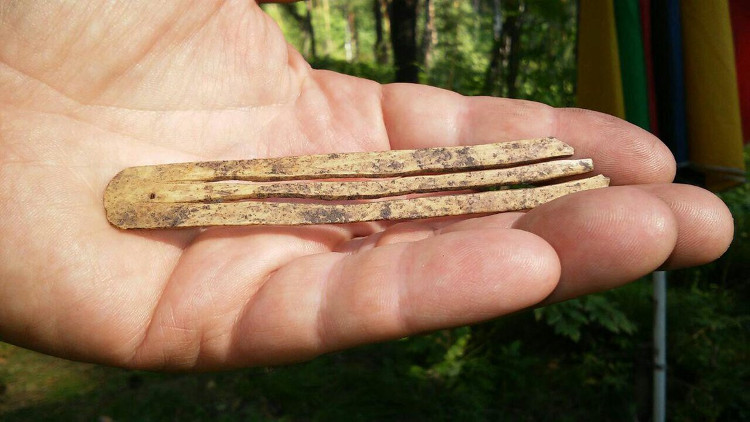Ancient instruments still play well after 1,700 years
Archaeologists have discovered that a lip flock made from animal bones can still produce sounds in Russia.
Archaeologists discovered a lipstick in the Altai Mountains, Russia, that could produce sounds after 1,700 years, National Geographic reported yesterday. This instrument is one of five lip flocks they find in two archaeological sites, Chultukov Log 9 and Cheremshanka.
"I tried it myself from Cheremshanka," said Andrey Borodovsky, a professor at the Institute of Archeology and Anthropology at the Russian Academy of Sciences. He studied these instruments for more than 20 years and said that one of Cheremshanka's lips still plays.

The new ancient lips found in Russia.(Photo: National Geographic).
These may have been due to craftsmen making cow or horse bones about 1,700 years ago, when the Hung controlled a large territory in Central Asia. They are nomads, living in areas like Mongolia, Kazakhstan, northeastern China and southern Russia today.
Instruments made by Altai craftsmen are not like other ancient instruments in Central Asia. Mongolian craftsmen and Tuva, Russia, use other materials such as deer horns to make their lips. Archaeologists have found a piece of plaque with deer horns in southern Siberia about 40 years ago.
Newly discovered lips in Russia are still quite modern compared to the type of record, which are 43,000-year-old flutes made from bird bones and mammoth ivory in a cave in southern Germany.
The lipstick that Borodovsky played was about 10.9cm long and 8.4cm wide. He remarked that the sound was similar to flageolet, a Renaissance-era musical instrument that resembled a flute.
- Found ancient Chinese musical instruments
- Learning musical instruments is good for the child's nerves
- Telemetron - Musical instruments are designed to play in a zero gravity environment
- Music improves children's learning ability
- The risk of infection when sharing steam instruments
- Video: Flying robots play musical instruments
- Ancient dogs play a role in bringing the deceased to the afterlife
- Video: Astronaut playing table tennis in the universe
- 'Scientist' is 17 years old
- High tech ink from graphene
- Without instruments, humans can create music with eye movement
- A close-up of a rare moment when divers play with
 Discovered an ancient centipede fossil 99 million years old
Discovered an ancient centipede fossil 99 million years old Discovered bat-like dinosaurs in China
Discovered bat-like dinosaurs in China Discovered a 200-year-old bronze cannon of the coast
Discovered a 200-year-old bronze cannon of the coast Discover 305 million-year-old spider fossils
Discover 305 million-year-old spider fossils